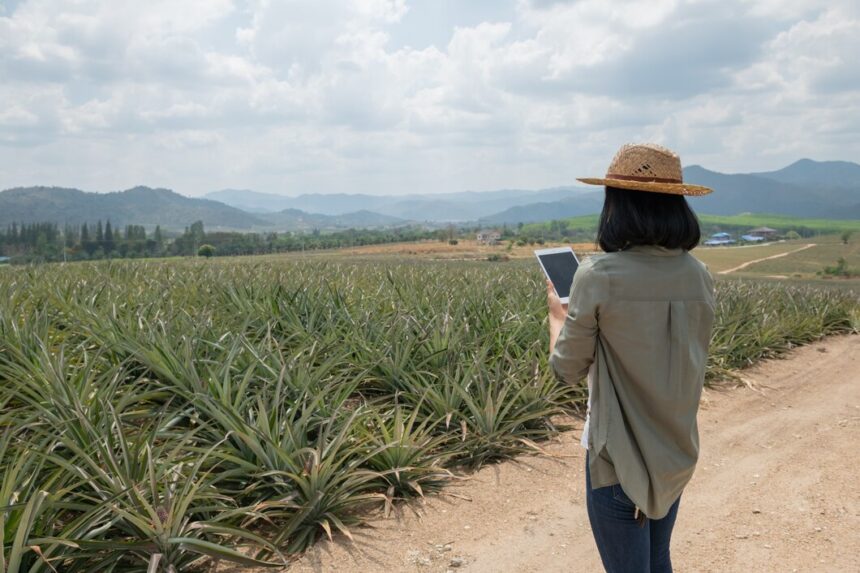Fusarium wilt, caused by the soil-borne fungus Fusarium oxysporum, is a serious disease affecting pineapple plants (Ananas comosus) worldwide. Early detection is crucial for managing and mitigating its spread. Here are 10 early signs that your pineapples may be affected by Fusarium wilt:
- Yellowing and Wilting Leaves: One of the initial symptoms is the yellowing and wilting of older leaves, starting from the bottom of the plant and progressing upwards. This occurs due to the fungus blocking water uptake in the vascular system.
- Stunted Growth: Pineapple plants affected by Fusarium wilt often exhibit reduced growth rates. The plants may appear smaller than expected for their age, with shorter and thinner leaves.
- Leaf Necrosis: Browning or necrosis of leaf margins and tips can occur as the disease progresses. This is a result of the fungus restricting the flow of water and nutrients within the plant.
- Internal Browning of Stem: Upon cutting the stem longitudinally, you may observe brown discoloration and vascular tissue damage. This is a distinctive characteristic of Fusarium wilt.
- Fruit Abnormalities: Infected pineapples may produce undersized or malformed fruits. These fruits often fail to develop properly and may show signs of premature ripening or rotting.
- Reduced Flowering: Fusarium wilt can cause a decline in flower production and fruit set. Infected plants may produce fewer flowers or fail to produce fruit altogether.
- Root Rot: As the disease progresses, roots may exhibit rotting symptoms, turning brown or black. This is accompanied by a noticeable decline in overall root health.
- Stem Discoloration: Infected stems may show brown or reddish discoloration, particularly near the base or lower parts of the plant. This discoloration indicates vascular damage caused by the fungus.
- Wilting During Hot Weather: Pineapple plants affected by Fusarium wilt often show severe wilting during hot weather, even when soil moisture levels are adequate. This wilting is due to vascular dysfunction.
- Field History: If neighboring pineapple plants or other crops in the field have been affected by Fusarium wilt in the past, there is an increased risk of new infections. Monitoring and early intervention are crucial in such cases.
Early detection of Fusarium wilt in pineapples is essential for implementing effective management strategies, such as crop rotation, soil fumigation, and using resistant varieties. Regular monitoring of plant health and prompt action upon noticing any of these signs can help minimize the impact of this destructive disease on pineapple production. Agricultural extension services and plant pathology experts can provide further guidance on identification and control measures tailored to your specific growing conditions.
Join 'Farmers Mag' WhatsApp Channel
Get the latest Farming news and tips delivered straight to your WhatsApp
CLICK HERE TO JOIN






